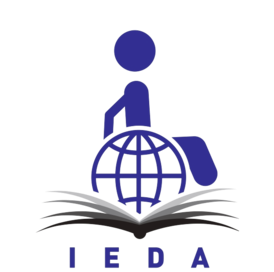Author: Mia Pavlić Cindrić, psychologist
Institution for professional rehabilitation and employment of persons with disabilities – URIHO
This is the second in a series of texts within the project “Inclusive Education: Ensuring Accessibility of Non-Vocational Education for Adults with Disabilities”.
The aim of this text is to address the meanings of the words integration and inclusion.
When we talk about education, there is usually a pre-designed knowledge structure and a form through which the content is shared with the participants. Also, usually in the background idea, as a prototype of the participants, there is an average person whose deviations in essential characteristics are not significant. It is expected that this man will moderate his unique specifics by his own efforts so that he fits into the existing organization of content and form.
Well, people with disabilities certainly deviate significantly from the prototype of the imaginary participant, if nothing else on the basis on which the disability status was established. Sometimes this basis is not compatible with the existing structure and it is necessary to adapt the form so that the content can be shared more efficiently.
It is here that the need to shape a universal form arises. To expect something that is fundamentally diverse to fit into one concept is wrong. Such a belief is based on incorrect settings and, therefore, the result of forcing a rigid conception is ineffective.
The word “integration” involves the implementation of something that differs in a set of individuals that are somewhat similar. In this case, the inclusion of a person with a disability in the group of adult participants in a non-vocational education program. Yes, that is the desired direction, it is certainly not an idea to design a new program only for people with disabilities that will take place separately from others (segregation). Still, integration has a certain amount of coercion and passivation. The one who deviates is pushed to fit into the existing collective and the circumstances of conducting education, that is, to become a part of the whole. The term “inclusion” also tends towards the whole. However, it emphasizes the activity of each member of one group. All adults, participants in a particular program, are equally important and no one stands out, not even people with disabilities. Inclusion includes the process, two-way collaboration with program implementers, as well as with other participants. It also involves the distribution of responsibilities and freedom of choice, as opposed to somewhat more rigid integration.
The inclusive process requires creativity and a willingness of stakeholders to accept diversity. It does not have a pre-elaborated form, but explores acceptable possibilities. Everyone involved in this process has space to express opinions, ideas and advocate for their rights. It is a dynamic process of learning and exchanging information.
Of course, it should be taken into account that this is a concept that we apply in the framework of education whose main goal is the acquisition of knowledge, skills and habits in a particular field. The flexibility of inclusion should not be confused with immature self-advocacy.
Main messages of this text:
1. All participants in a particular education program are equally important and no one should be singled out.
2. Program stakeholders have the opportunity to create the most efficient way of knowledge transfer.
3. Knowledge exchange is a creative process that requires flexibility in its form.
To all parties to adult education programs, knowledge sharing should strive for simplicity and cost-effective allocation of roles to increase productivity. Each of us is able to be innovative and actively participate in the process.



